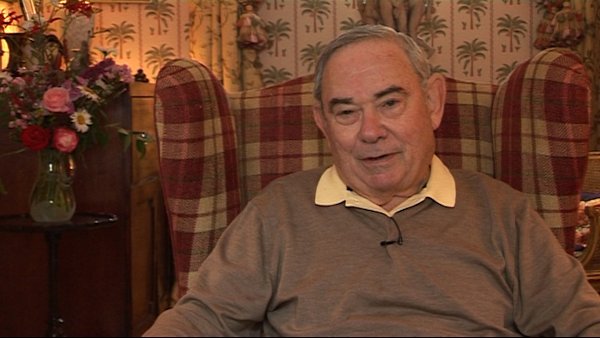NEXT STORY

The world's first live virus vaccine
RELATED STORIES

NEXT STORY

The world's first live virus vaccine
RELATED STORIES


|
Views | Duration | |
|---|---|---|---|
| 31. Professor Charles M Pomerat | 133 | 01:58 | |
| 32. Working with adenoviruses | 62 | 04:09 | |
| 33. A seredipitous discovery | 78 | 04:12 | |
| 34. Why Galveston tap water was special | 93 | 02:15 | |
| 35. Charles Pomerat's polkadot shorts | 64 | 06:07 | |
| 36. Financial security came with the Fellowship at Galveston | 52 | 01:28 | |
| 37. Hilary Koprowski appointed Director of the Wistar Institute | 68 | 02:07 | |
| 38. Hilary Koprowski | 78 | 02:01 | |
| 39. On our way to Philadelphia | 54 | 01:11 | |
| 40. Reconstructing the Wistar Institute | 53 | 02:43 |


My job technically was to operate a central cell culture facility to produce cell cultures for use by other members of the institute. And I should say a word or two about the structure of the institute. Hilary brought with him to the Wistar Institute several people from the pharmaceutical company in, that he left, and all of them actually became good friends of mine. He also hired several other people in building the labs, and I should say parenthetically that when I arrived in 1958, Hilary had gotten sufficient funds to remodel the entire institute. To do away with the museum and to build laboratories and conference rooms, and rebuild the library that existed already at the Wistar Institute, a very interesting 19th-century medical library, an anatomical library, so that we had to wait, as I recall, about six months before the construction was completed.
During that time I shared laboratory space in a semi-circular shaped room, which was an old anatomical laboratory, with several other of the scientists who worked there and their technicians, we just sort of spread out over this semi-circular shaped table that ran underneath the windows on that floor, and it was large, this was a very large room. Of course very little could be done there. We used to have a saying that it was very difficult to do cell culture in that room because the construction had been such that it allowed the cells to grow in a growth medium that contained 10% plaster, to give you some idea of the primitive working conditions through that six-month period. Of course it was worth the wait because we knew that we were going to end up with very beautiful luxurious labs, and we did.
Leonard Hayflick (b. 1928), the recipient of several research prizes and awards, including the 1991 Sandoz Prize for Gerontological Research, is known for his research in cell biology, virus vaccine development, and mycoplasmology. He also has studied the ageing process for more than thirty years. Hayflick is known for discovering that human cells divide for a limited number of times in vitro (refuting the contention by Alexis Carrel that normal body cells are immortal), which is known as the Hayflick limit, as well as developing the first normal human diploid cell strains for studies on human ageing and for research use throughout the world. He also made the first oral polio vaccine produced in a continuously propogated cell strain - work which contributed to significant virus vaccine development.
Title: Reconstructing the Wistar Institute
Listeners: Christopher Sykes
Christopher Sykes is a London-based television producer and director who has made a number of documentary films for BBC TV, Channel 4 and PBS.
Tags: Wistar Institute, Hilary Koprowski
Duration: 2 minutes, 43 seconds
Date story recorded: July 2011
Date story went live: 08 August 2012